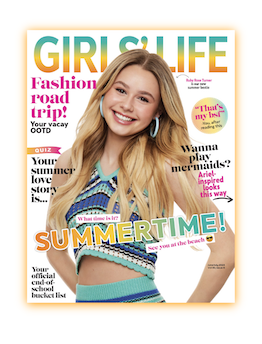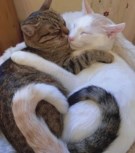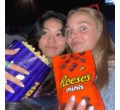MAKE IT CUTE
Get Inspired
Share your story! Tips for writing nonfiction

Have you read some essays in your fave magazine (like Girls’ Life’s “You Wrote It” column, obvi!), or listened to a great TED talk and thought, "I want to do that!"? News flash: you totally can. Creative nonfiction is having a moment as a genre right now. Writers worldwide are emboldened to share their inspiring, hilarious and heartbreaking stories, no matter their age or experience. Here’s some advice to help you put pen to page and share your story.
Choose a memory
While it’s tempting to start writing your autobiography, starting way back when you were born isn’t necessary for nonfiction. It’s best to focus on a few memories, or even just one. You want to think about which memories hold the most meaning for you, and what you learned from them. When you write nonfiction, you’re often writing from two perspectives: the you that’s remembering, and the you that was experiencing. Since you’ve already been through your experience, the you that’s remembering can interject with your present-day feelings relating to the memory. The you that was experiencing stays naive and unsuspecting, which builds suspense as you relate the tale and can help readers feel more immersed in the essay. A good way to choose a memory is to ask yourself what true story you *always* tell to your family or friends—be it scary, embarrassing or heartwarming.
Make it a story
As we mentioned, listing every single life event makes your essay confusing and unfocused. After you’ve chosen which memories to write about, though, the tendency to list might come back. While this is fine for a first draft—it will help you get all the details on the page about what happened—you’ll want to focus more on setting scenes as you revise. Think about the sensory details of your memory. What did you see, hear, smell, taste and touch? If you can’t remember the exact words you or others said, feel free to paraphrase. As long as you’re conveying an accurate picture of what happened, your essay is nonfiction. If you get the urge to stray from what really happened, that’s totally alright, but remember to categorize that work as autobiographical fiction when you send it anywhere.
Play around with structure
One cool thing about the essay’s newfound popularity is that many authors are reinventing the form. While stories tend to need a beginning, middle and end, the events that happen within them can be presented in any order. Say you’re writing about your seventh birthday party. If you want to start with the part where your mom dropped the cake on the floor, go ahead. Then, flash back to the start and describe the chaos of the party building up to the unfortunate incident. Don’t feel limited to prose, either. Creative non-fiction can contain (or be) poems, vignettes, comics and more. There are endless ways for you to share your story, so feel free to experiment.
Braid in other elements
AKA, don’t just stick to the memory. If you were obsessed with a certain band while writing about your relationship with your mom, feel free to weave in facts about their music. Maybe you’re writing about a fast food job you had—you can take a half a page to describe the intricate process of making their burgers. As long as it’s somewhat related (even in an abstract way, like how X reminds you of Y), unexpected elements are a nice addition to the typical essay. Great nonfiction often braids together multiple subjects along with the memories. It helps entertain, adds depth to the story and informs the reader about something you’re passionate about.
Read, read, read
In the digital age, there are a lot of publications putting out essays on the web (GL included!). Some other examples include Teen Ink and Young Writers magazine. There are also a lot of great essay collections and memoirs—like Dick Van Dyke’s Keep Moving, or the more artsy but insanely hilarious Hyperbole And A Half by Allie Brosh. Look for these and other good nonfiction works at your local bookstore or library. By reading what’s out there, you’ll be inspired to learn from people who have already excelled at creative nonfiction—so you can do the same.
Don't let age stop you
While it might feel like you haven’t had any really notable life experiences at such a young age, there are always compelling experiences to write about no matter how old you are. Everyone has a story. It doesn’t have to be full of action or glamour. If anything, it’s the most relatable stories of growing up that capture readers. Not to mention that writing creative nonfiction is a great way to channel your creativity and express yourself. When you’re happy with your essay, you can submit it for publication at one of the above-mentioned websites or in a school journal—or just share it with family and friends. The bottom line: don’t let your doubts keep you from telling your story.
Have you ever written a personal essay? Tell us about it in the comments below!

 become a contributor
become a contributor


















